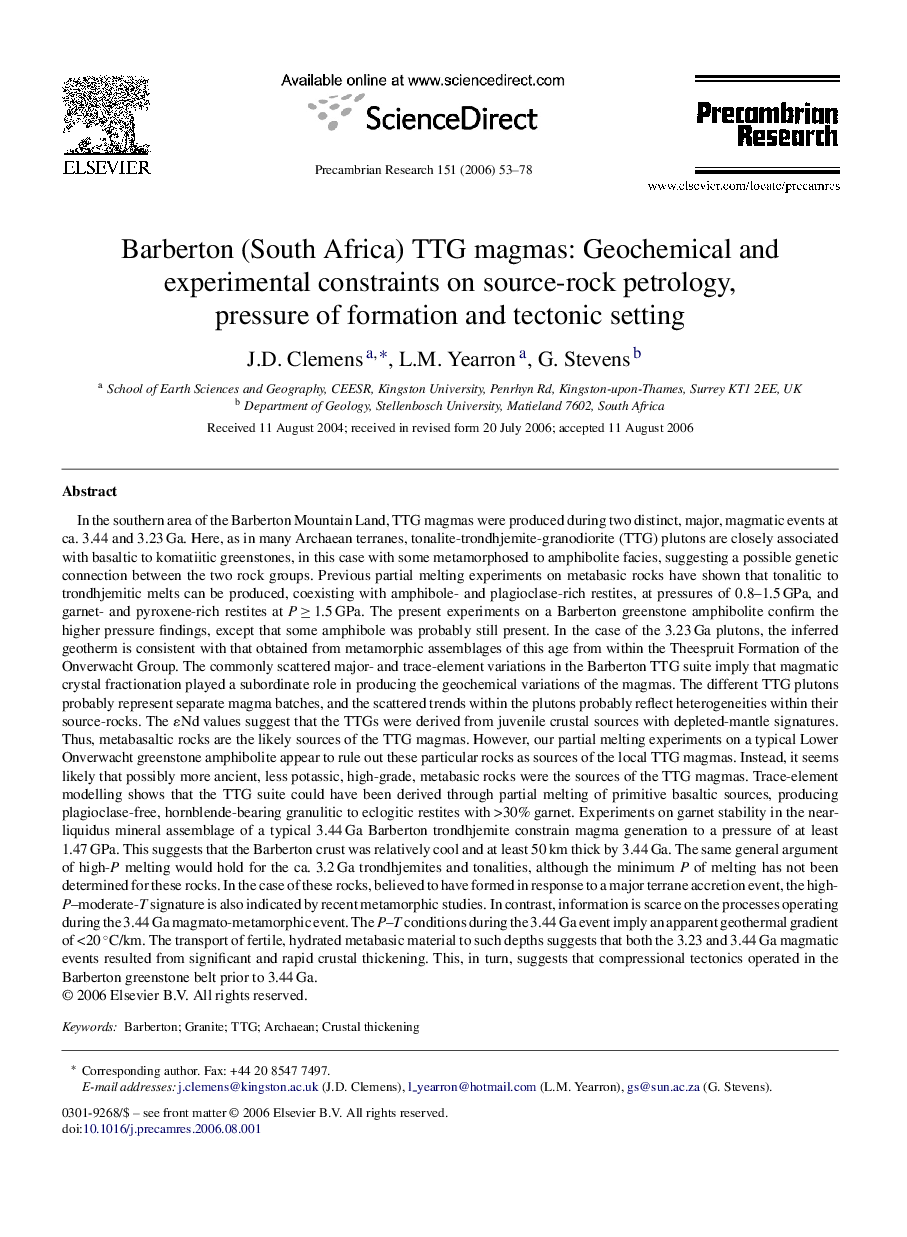| کد مقاله | کد نشریه | سال انتشار | مقاله انگلیسی | نسخه تمام متن |
|---|---|---|---|---|
| 4724758 | 1639727 | 2006 | 26 صفحه PDF | دانلود رایگان |

In the southern area of the Barberton Mountain Land, TTG magmas were produced during two distinct, major, magmatic events at ca. 3.44 and 3.23 Ga. Here, as in many Archaean terranes, tonalite-trondhjemite-granodiorite (TTG) plutons are closely associated with basaltic to komatiitic greenstones, in this case with some metamorphosed to amphibolite facies, suggesting a possible genetic connection between the two rock groups. Previous partial melting experiments on metabasic rocks have shown that tonalitic to trondhjemitic melts can be produced, coexisting with amphibole- and plagioclase-rich restites, at pressures of 0.8–1.5 GPa, and garnet- and pyroxene-rich restites at P ≥ 1.5 GPa. The present experiments on a Barberton greenstone amphibolite confirm the higher pressure findings, except that some amphibole was probably still present. In the case of the 3.23 Ga plutons, the inferred geotherm is consistent with that obtained from metamorphic assemblages of this age from within the Theespruit Formation of the Onverwacht Group. The commonly scattered major- and trace-element variations in the Barberton TTG suite imply that magmatic crystal fractionation played a subordinate role in producing the geochemical variations of the magmas. The different TTG plutons probably represent separate magma batches, and the scattered trends within the plutons probably reflect heterogeneities within their source-rocks. The ɛNd values suggest that the TTGs were derived from juvenile crustal sources with depleted-mantle signatures. Thus, metabasaltic rocks are the likely sources of the TTG magmas. However, our partial melting experiments on a typical Lower Onverwacht greenstone amphibolite appear to rule out these particular rocks as sources of the local TTG magmas. Instead, it seems likely that possibly more ancient, less potassic, high-grade, metabasic rocks were the sources of the TTG magmas. Trace-element modelling shows that the TTG suite could have been derived through partial melting of primitive basaltic sources, producing plagioclase-free, hornblende-bearing granulitic to eclogitic restites with >30% garnet. Experiments on garnet stability in the near-liquidus mineral assemblage of a typical 3.44 Ga Barberton trondhjemite constrain magma generation to a pressure of at least 1.47 GPa. This suggests that the Barberton crust was relatively cool and at least 50 km thick by 3.44 Ga. The same general argument of high-P melting would hold for the ca. 3.2 Ga trondhjemites and tonalities, although the minimum P of melting has not been determined for these rocks. In the case of these rocks, believed to have formed in response to a major terrane accretion event, the high-P–moderate-T signature is also indicated by recent metamorphic studies. In contrast, information is scarce on the processes operating during the 3.44 Ga magmato-metamorphic event. The P–T conditions during the 3.44 Ga event imply an apparent geothermal gradient of <20 °C/km. The transport of fertile, hydrated metabasic material to such depths suggests that both the 3.23 and 3.44 Ga magmatic events resulted from significant and rapid crustal thickening. This, in turn, suggests that compressional tectonics operated in the Barberton greenstone belt prior to 3.44 Ga.
Journal: Precambrian Research - Volume 151, Issues 1–2, 1 December 2006, Pages 53–78